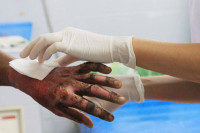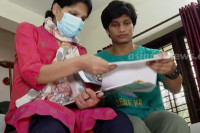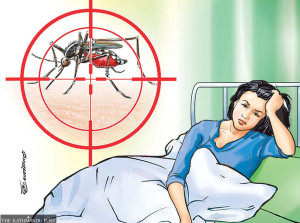Health
Study finds a litany of shortcomings and shortages in Covid-19 treatment facilities
From inadequate protective suits to lack of trained medical workers to limited testing capacity, health facilities have a host of issues keeping them from fighting the disease effectively..jpg&w=900&height=601)
Arjun Poudel
Only 33 percent of the clinics and hospitals designated for Covid-19 treatment have personal protective equipment sets specified by the guidelines of the Ministry of Health and Population, a new study shows.
The study carried out by Nepal Health Research Council has also found that only three percent of the Covid-19 treatment facilities have dedicated diagnostic services and only 19.4 percent of them have central pipeline oxygen supply.
Designated ambulances are available in 43 percent of the Covid-19 treatment facilities, with a total number of 53 ambulances, according to the study.
The Assessment of Health-related Country's Preparedness and Readiness of Nepal for Responding to Covid-19 Pandemic was carried out from April 26 to May 27 in 93 Covid-19 treatment clinics and hospitals across the country.
Dr Megnath Dhimal, chief researcher at Nepal Health Research Council, said the study was carried out to assess the current status of the health facilities where Covid-19 cases are being treated.
"We hope that the findings of this study will help the concerned agencies to know their resources gap and address them for better preparedness against Covid-19," Dhimal told the Post.
According to the study, the Covid-19 treatment centres also lack trained human resources in case of major outbreaks.
Only 14 percent of the Covid-19 treatment facilities have designated medical officers; 86 percent of the Covid-19 hospitals have been pooling medical staff to handle the increasing pressure of patients.
Three health workers—doctor and nurses—work on an average in one shift in Covid-19 treatment hospitals and they continuously work for nine hours, the study has found.
Similarly, only 56 percent of the Covid-19 treatment centres have been providing 24-hour services.
The study also found that only 60 percent of the Covid-19 treatment hospitals have trained their health workers to care for the coronavirus infected patients.
Only 72 percent of the Covid-19 treatment facilities have provided sample handling training to the health workers, whereas training for use of personal protective equipment has been provided to only 76.3 percent of the health workers.
In other words, around 24 percent of the health workers who are not trained to use the personal protective equipment are at risk of contracting the coronavirus.
Dr Sher Bahadur Pun, chief of the clinical research unit at Sukraraj Tropical and Infectious Disease Hospital, said that the findings of the study were alarming.
“What would be the condition of other health facilities when health facilities designated for treatment of Covid-19 lacks personal protective equipment and other tools?” said Pun.
According to him, most of the Covid-19 cases are asymptomatic, and health workers, if not equipped with protective gear, can be infected with the disease.
The study has also pointed out the lack of testing facilities and quarantine centres for frontline health workers in case they contract the infection while caring for the patients.
Of the total Covid-19 treatment facilities, only 54.8 percent have dedicated testing centres for their health workers and 49.5 percent have dedicated quarantine wards.
The findings of the study also suggest that not enough health workers have been trained to handle the bodies of coronavirus infected patients.
Only 27 percent of the hospitals have trained their staff on how to safely handle the bodies.
Likewise, body bags are also in short supply, with the availability of only 214 body bags in 6.5 percent of the Covid-19 treatment facilities.
“Risk of spread of the coronavirus increases when health workers deployed in the front line do not have protective gear and are not trained how to care for the patients,” Pun said.
The study has also found that there is a shortage of basic hospital essentials like soap, water, and alcohol-based sanitisers in 4 percent of the Covid-19 treatment hospitals.
Similarly, none of the Covid-19 clinics has CT-Scan service and only a few clinics have designated portable X-ray and ultrasonography facilities.Lack of testing capacity is another major issue pointed out by the study. Only 3 percent of the Covid-19 treatment facilities have polymerase chain reaction machines to test the swab samples of suspected coronavirus infected people.Health facilities also lack trained human resources to conduct the PCR tests. Only one-third of the hospitals have trained human resources to conduct the PCR tests.



 9.12°C Kathmandu
9.12°C Kathmandu














